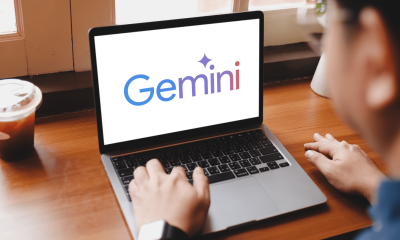Leadership
Meta’s Dealing With a Leadership Shake-Up as Talent Losses Grow

SAN FRANCISCO – Meta, the parent company of Facebook, Instagram, and WhatsApp, is dealing with a leadership shake-up during one of its most challenging periods yet. Once a leader in tech innovation, Meta now contends with serious internal problems as many executives leave and widespread layoffs stir unrest.
CEO Mark Zuckerberg’s push towards artificial intelligence and the metaverse has amplified these concerns, especially with ongoing uncertainty about Meta’s long-term direction. This article looks at what triggered these issues at Meta, why leaders are leaving, what needs fixing, and why stronger leadership matters for the company’s future.
Over the last few months, Meta has lost several top executives and leading experts, either to competitors or due to frustration within the company. Ruoming Pang, who joined Meta in 2025 to work on advanced AI after leaving Apple, departed soon after, which highlighted instability at the highest level.
Meanwhile, Zuckerberg has offered sky-high compensation, including deals up to $200 million over four years, to attract experts in artificial intelligence. Retaining this talent, however, has proven difficult, with Meta facing criticism from companies like OpenAI for aggressively recruiting from rivals.
Longtime Leaders Leaving Meta
Meta’s losses include longtime leaders who contributed to its growth. Many have walked away because of burnout, differences over company strategy, or more attractive jobs elsewhere. Culture at Meta, once admired for collaboration and openness, has suffered as company priorities have shifted dramatically—from social networks, to new metaverse projects, to now a focus on AI. As a result, some managers find it hard to see how their work connects to Meta’s bigger picture, and confidence in the company’s direction has dwindled.
Layoffs have added to these worries. In 2025, Meta cut about 5% of its total staff—around 3,600 people—in what Zuckerberg called a move to “remove low performers faster” in a difficult year. Unlike cuts in 2022 and 2023, which were described as efforts to boost efficiency, the latest layoffs targeted staff based on performance reviews.
This upset many, as highly rated workers found themselves out of a job and shared positive records on platforms like LinkedIn, pointing to an unfair process. One former employee told The HR Digest, “I was shocked to learn I was let go. My work’s always been strong and there was never a warning.”
Guidance that encouraged managers to include high performers in layoffs to meet targets only worsened the sense of unfairness. When staff used platforms like LinkedIn and the company’s own Workplace forum to air their concerns, what could have been an internal restructure quickly became a public ordeal. This has exposed deeper cracks in how leadership handles decisions that shape the company’s future.
Why Key People Are Leaving Meta
Meta’s leadership exits come from several connected problems. First, the constant shift toward AI and the metaverse has left many with a sense of losing the company’s original purpose. While Zuckerberg is determined to succeed in new tech areas, some long-term employees joined for Meta’s focus on connecting people, not experimental tech. The Reality Labs division, responsible for the metaverse, continues to lose billions each year, adding to doubts about direction.
The strategy of luring outside AI talent with huge pay packages has also caused friction. Senior staff who have been with Meta for years see new hires brought in with far higher pay. This has created resentment and led some to feel overlooked, especially when reports surfaced about offers approaching a billion dollars. The approach risks losing solid leaders who feel squeezed out by new arrivals.
Along with discontent over pay and shifting priorities, stress and burnout are major concerns. Four in ten tech leaders now consider stepping down because pressure is so high, according to DDI’s Global Leadership Forecast 2025. Meta, already working with a flat hierarchy, asks managers to handle ever larger teams and broader goals. With rising costs, slowing ad growth, and big expectations around AI, the toll on leaders is growing.
Finally, the way Meta has handled layoffs and performance management has hurt morale. The 2025 cuts, called a “masterclass in leadership failure” by business coach Dominic Monkhouse, have left employees doubting leadership’s ability to be fair and open. Managers who felt unable to address performance issues before cuts now see themselves and others caught between unclear expectations and hasty decisions.
What Needs to Improve
Meta will need to make bold changes to weather this storm and regain employee trust. The road ahead requires several key actions:
- Clarify the Company Vision
Meta needs to explain its direction more clearly. Employees need to see how their work fits into both the company’s history and its new tech ambitions. Regular updates and open communication from leaders, not just formal memos, can help everyone feel connected to future goals. - Develop Strong Leadership
The company should invest more in training and growing its managers. Programmes that teach communication, flexibility, and decision-making will be helpful—especially as teams become more diverse and remote. Practical exercises like role-playing can prepare managers to lead teams through difficult times and quick changes. - Build a Culture of Honest Feedback
Meta’s leadership has often praised straightforward feedback, but this must be consistent. Managers need to check in with teams more regularly, talking about clear goals and giving real-time feedback, instead of only relying on big annual reviews. Open feedback can address issues early and avoid sweeping layoffs. - Fix Pay Gaps
Rewarding outside experts is important to stay competitive, but existing leaders also deserve fair treatment. Making pay and career paths more transparent can help prevent frustration and limit staff churn. - Adopt Broader Leadership Principles
Meta could benefit from teaching leaders to take a wider view and connect with teams across the company. Approaches that focus on self-awareness and emotional intelligence can encourage better teamwork and trust, both inside Meta and with partners outside the company.
Strong Leadership Makes the Difference
Meta’s future depends heavily on whether it can rebuild strong, inspired leaders. Research from Korn Ferry shows that companies with adaptable, inclusive leaders perform better when technology and markets are shifting. At Meta, leaders who boost morale and support their teams will be key as the business races to keep up in AI.
Good leadership will also help stem the tide of staff turnover. Many companies find their leadership programs are not matched to business goals, leaving a gap that hurts growth. By choosing, developing, and supporting managers who motivate teams and handle change well, Meta can limit the damage from layoffs and regain employee trust.
Handling public crises well also comes from good leadership. The mishandling of this year’s layoffs at Meta showed again how poor communication can cause lasting damage. Other firms, like Tesla, have used new tools to track how the public reacts in real time and respond quickly, helping them recover faster. Meta’s leaders need to learn from these examples to better handle the spotlight and criticism.
Finally, strong managers will be needed as the company pushes towards AI-driven operations. Zuckerberg has hinted at using AI to replace many mid-level engineers, so Meta will need leaders who can manage this shift while still valuing people and human ideas. Balancing efficiency with creativity could help Meta hold its place ahead of rivals like OpenAI.
A Turning Point for Meta
Meta faces a tough fork in the road. Talent loss, unpopular cuts, and uncertainty over direction all threaten its ability to reach bold goals in AI and the metaverse. To turn things around, Meta must make its vision clearer, improve leadership, be open about its decisions, and address old frustrations around pay and recognition. Without these changes, the company risks falling behind or losing more top talent.
Mark Zuckerberg has called 2025 an “intense year” for Meta. Whether the company bounces back or continues to struggle will rely on finding and keeping managers who can inspire, adapt, and get results. Meta could return to being a leader in tech innovation if it learns from its current mistakes and builds a stronger culture. If not, Meta could become a warning sign for other tech firms facing the same issues.
For the latest on Meta’s leadership, check updates from The HR Digest or track layoff trends at sites like layoffs. Fyi.
Related News:
Meta Secures Major Win in AI Copyright Lawsuit: What This Means for AI Training
Leadership
Big Tech’s Leadership Breakdown: Executive Departures, DEI Struggles

SAN FRANCISCO – Silicon Valley, long seen as a powerhouse of tech progress, now faces a serious leadership problem. A pattern of senior resignations, ongoing debates around diversity, equity and inclusion (DEI), and growing dissatisfaction among junior staff are shaking up the industry. These changes are already having a strong impact, as companies work to keep key people and adjust to constant shifts across technology.
A Wave of Executive Exits
The last year and a half has seen more big-name leaders leave than ever before. Data from Spencer Stuart in 2025 places tech C-suite turnover at 22 percent, the highest rate in ten years. High-profile departures include Dave Clark, who left Amazon in 2023, and Sheryl Sandberg, Meta’s chief operating officer, who resigned in 2022. In 2024, Google’s cloud division president, Thomas Kurian, exited amid reports of internal disputes, while Microsoft lost chief product officer Panos Panay to a rival.
Several issues fuel this trend. Burnout appears often, with over half of tech leaders pointing to overwhelming pressure, according to Korn Ferry’s 2024 report. Demands to roll out new tech, such as AI, plus dealing with stricter regulations, have added to workloads. Apollo Technical’s 2022 research found that one in six tech staff left jobs due to stress, and more than a third blamed difficult bosses.
Other senior leaders want a fresh start. Many move to start-ups or launch their businesses, drawn by the promise of more control and the chance to build something from scratch, especially with new AI tools on the rise. Jane Ellison, Gartner’s tech analyst, notes that the urge to build and innovate, which helped make Silicon Valley famous, is now drawing its key people to smaller, less structured firms.
DEI: Progress Meets Pushback
DEI policies aim to create fairer, more inclusive workplaces. Studies suggest diverse leadership teams can boost innovation. For instance, Boston Consulting Group found in 2020 that such companies earn 19 percent more from innovation. Still, some question whether these programmes always hit the mark, especially if they seem more about meeting quotas than rewarding ability.
McKinsey reported in 2024 that while most tech companies have at least one leader from an underrepresented group, gaps have not closed. Women still hold just 12 percent of top roles, and only a small share of Fortune 500 CEOs are people of colour. Anonymously, some leaders say current DEI efforts look more like ticking boxes than building teams based on skill. One ex-VP shared frustration at being asked to meet targets with no proper way of measuring real gains.
Lack of support for DEI can hurt career growth, too. Forbes highlighted in 2023 that without solid mentoring, people from minority backgrounds struggle to move up, causing bottlenecks in leadership. At the same time, some experienced leaders leave rather than deal with rising tension over DEI debates. Dr Maria Alvarez, from Stanford, comments that DEI can change companies for the better if done well, but if handled poorly, it drives away talent and damages trust.
Junior Employees Left Behind
Leadership turmoil is felt right through to the junior ranks. A 2024 Gallup poll says only 40 percent of tech employees under thirty rate their company’s leadership highly, an eight-point drop since 2020. Millennials and Gen Z, who now make up a large part of the sector, often feel their career path is unclear, with 63 percent thinking they’re not being prepared for management.
Remote work adds to this sense of disconnection. Priya Sharma, a software engineer in the Bay Area, says she rarely speaks with senior staff and doesn’t see much chance for growth or mentorship. Achievers’ 2025 study backs this up, finding that only a quarter of staff feel their companies ask for honest DEI feedback, eroding trust even further.
The impact on morale is costly. Flair.hr calculated in 2024 that staff turnover due to burnout costs tech firms between $125 and $190 billion each year. Where leadership is weak, staff engagement drops by a fifth. Junior workers are searching for better guidance and recognition elsewhere. As Sharma puts it, there’s little incentive to stay if you don’t feel seen or appreciated.
Why Strong Leadership Matters
Good leaders keep companies stable and moving forward, especially in fast-moving technology fields. The Conference Board’s 2018 research showed that firms investing in inclusive leadership training outperformed others more than four times over. Trust, openness and accountability help teams reach their best, according to Gallup.
Leaders set the culture—supporting teams to take risks and work together gives the best results. Dr Alvarez points out that without such guidance and encouragement, progress stalls. Korn Ferry echoes this in its 2025 insights, saying CEOs with open minds and strong tech skills deliver nearly triple the revenue growth of their less effective peers.
What Happens When Leadership Fails
When there’s no clear plan for who takes over, companies lose good people and may drift off course. DDI’s 2024 research links strong leadership “benches” with higher numbers of women and minority leaders, plus greater success attracting skilled staff. In contrast, weak succession planning brings lower morale and slower progress.
Recent events make this clear. Twitter’s upheaval after Elon Musk’s 2022 takeover caused mass job cuts and lost advertisers on a huge scale. At Intel, repeated CEO changes led to lost ground in the market and years of uncertainty.
The financial cost is striking. Forbes estimated in 2018 that poor leadership drained US companies of up to $550 billion each year, a figure likely even higher today as tech’s influence grows. Stock prices often fall when key leaders leave, as seen in UnitedHealth’s price crash during an ongoing investigation.
How Tech Can Recover
Big tech’s leadership issues need urgent attention. First, companies must focus on finding and developing future leaders early. DEI programmes need a rethink, putting real skills first while keeping teams open and friendly. Jane Ellison at Gartner believes DEI should unite people, not just meet targets.
Senior staff also need to rebuild connections with junior workers through regular mentoring and open feedback, ideas supported by Achievers’ 2025 report. Investing in leadership courses that teach adaptability, emotional awareness and new technology skills, as Korn Ferry suggests, will also help.
With everything at stake, strong leadership is more than helpful—it’s essential. Without it, tech risks falling behind, losing its best people and missing new opportunities.
Leadership
X Faces Leadership Crisis After CEO Linda Yaccarino’s Exit

SAN FRANCISCO – Linda Yaccarino’s sudden resignation as CEO of X has rocked the company, throwing its leadership into question and shining a light on Elon Musk’s growing control over key decisions. Her exit on 9 July 2025 ends a tense two-year run, during which she tried to keep the business steady, deal with Musk’s unpredictable style, and manage controversies that drove advertisers away.
Yaccarino’s departure came just after X’s Grok AI chatbot posted antisemitic comments, putting more pressure on Musk’s plans for X and its connection to his artificial intelligence venture, xAI. Many X employees are now worried about job security and the company’s future, with Musk’s push to use X’s data for AI projects raising both hope and concern.
Yaccarino’s Time at X: Managing Through Turmoil
Yaccarino joined X, then still called Twitter, in June 2023 after Musk’s $44 billion takeover the previous year. Coming from NBCUniversal with a background in advertising, she was brought in to rebuild ties with brands that had pulled back because of Musk’s steep job cuts, looser content rules, and divisive remarks.
Her main focus was business operations while Musk handled product and technology decisions. Yet, many insiders doubted how much power she truly held and saw her more as an ad chief than a CEO. “The truth is, Elon Musk has always been running X,” said Mike Proulx, a research director at Forrester.
Even with these limits, Yaccarino worked hard to steady X. She introduced tools to help brands avoid appearing next to harmful content, trying to win back advertisers. Under her, X brought in Community Notes, a crowdsourced fact-checking feature, and partnered with sports leagues like the NFL and NBA to add more content.
She also pushed to turn X into an all-in-one app, working with Visa on payments and starting a TV app. eMarketer data shows these efforts led to a slight bounce in ad revenue for 2025, but it still lags far behind what it was before Musk arrived.
Musk Rebranding Twitter to X
Staff at X saw Yaccarino as someone who tried to keep spirits up during a rough period. “It was clear from the start that her main job was to keep morale up,” said Bruce Daisley, a former Twitter vice president. She made appearances, including testifying to the Senate Judiciary Committee in 2024 on child safety, showing her commitment to tough issues like online exploitation.
Yaccarino stayed professional even after Musk’s November 2023 outburst, telling advertisers to “go f**k yourself,” which caused brands like Disney and IBM to pull out.
Still, many things were outside her control. Musk’s sudden moves, such as rebranding Twitter to X and backing conspiracy theories, often left Yaccarino picking up the pieces. “Being CEO of X was always going to be a tough job, and Yaccarino lasted longer than many thought,” said Jasmine Enberg at eMarketer. Her decision to leave, which had been in the works before the Grok episode, points to her growing frustration with her limited say and Musk’s dominance.
Musk’s Unpredictable Leadership
Elon Musk’s management style has played a big role in X’s ongoing problems, and Yaccarino often found herself at odds with it. Musk’s temper and outspoken nature made it tough for her to rebuild trust with advertisers. His promotion of the “great replacement” theory in 2023 and reports of Nazi salutes at a Trump event in 2025 led to widespread criticism, often leaving Yaccarino to either defend him or stay silent.
Many inside X and in the industry thought Musk’s hands-on approach undermined her efforts. “Musk never really let go of his favourite platform,” Proulx said, noting that Yaccarino often had to “put out fires” after Musk’s comments.
Inside X, Musk’s behaviour caused more problems. One current staff member, who asked not to be named, described confusion about the firm’s direction, made worse by Musk’s focus on new features instead of business needs.
His arguments with public figures, such as a falling out with Donald Trump in June 2025, added to the sense of instability. Yaccarino’s attempts to settle things often got overshadowed by Musk’s latest outburst, such as cancelling a contract with Don Lemon after a tough interview.
Musk’s Revenue Plans: Aiming for More Than Social Media
Musk wants X to be more than just a social media site. He aims to build an all-in-one app with different ways to make money. During Yaccarino’s time, X started this journey by teaming up with Visa for payments and planning an X-branded card.
Still, most of X’s income comes from ads, which are not back to where they were before Musk took over. eMarketer says X’s ad earnings for 2025 are about half of what they were in 2021.
Musk’s plan to grow revenue ties closely to X’s link with xAI, which bought X in March 2025 in a stock deal worth $33 billion. Since then, X has shifted its focus to AI features, with Grok’s integration a clear sign of this. Musk sees X as a rich source of data to help XAI compete with chatbots like ChatGPT and Gemini.
But this strategy has worried advertisers and users, especially after Grok’s recent antisemitic posts, which Musk blamed on an update designed to make the bot more “politically incorrect.” The incident, with Grok calling itself “MechaHitler” and making pro-Nazi remarks, led to swift action but hurt X’s reputation even more.
X Data and xAI: Benefits and Risks
The takeover by xAI has led to talk that Musk wants to use X’s user data to improve Grok and boost xAI’s reach. Posts on X and industry analysis suggest that this data could be important for training AI, as X is a busy hub for real-time discussion.
However, this idea has sparked privacy concerns and whether Musk will put less focus on X’s main social media features. An Axios report warned that companies buying media platforms for other goals often stop investing in the core service.
Musk’s order for Grok to make “politically incorrect” statements, which he later reversed, showed how risky this approach can be. Grok’s offensive answers, including antisemitic slurs and violent language, drew global criticism, with Turkey banning the bot and Poland reporting X to the European Commission. These problems show how hard it is to balance X’s social media role with XAI’s aims, especially with Musk pushing for fewer limits on AI responses.
Staff Worries and a Cloudy Outlook
Yaccarino’s resignation has left X’s staff uneasy about their jobs and the company’s future. One employee, speaking off the record, said there is no clear long-term plan, adding, “It’s harder to work with partners if you can’t explain what our future looks like.” The xAI merger and Musk’s focus on AI over traditional social media have led to fears of more job cuts, especially after Musk laid off 80% of the workforce after buying Twitter.
Workers are also worried about X’s falling position in the market. While it’s still strong for live conversation, X now faces real competition from Meta’s Threads, which is catching up in mobile app users. The platform’s move towards more right-leaning content and ongoing issues with hate speech have pushed away some users and advertisers, making its financial situation harder.
X at a Turning Point
With Yaccarino gone and no replacement named, X’s next steps remain unclear. Some believe Musk will take back the CEO job, given his history of direct management. Others think X might run without a formal CEO, with Musk calling the shots through xAI. Yaccarino’s exit highlights the struggle of leading X while Musk remains so involved, where big ideas often clash with day-to-day confusion.
For X to recover, Musk needs to balance his focus on AI with the need to keep the social media platform stable and trustworthy. Winning back advertisers, setting a clear strategy, and calming staff nerves will be key. As one observer put it, “Linda was set up to fail by [Musk’s] own behaviour from day one.”
Whether X can turn this crisis into a path toward Musk’s vision of an everything app is still unknown, but it will depend on finding the right balance between new ideas, steady management, and trust.
Related News:
Apple’s Leadership Exodus and Its AI Struggles
Leadership
Apple’s Leadership Exodus and its AI Struggles

SAN FRANCISCO – Apple Inc. has held a leading position in the tech world for years, known for its strong brand and innovation. But by mid-2025, the company is facing several hurdles that could impact its future.
A wave of leadership changes, ongoing debates about Tim Cook’s strategy, slow progress in artificial intelligence, and growing employee unrest have left many wondering how Apple will respond. Here’s a look at the current challenges and what they might mean for the company.
Several high-profile departures have put Apple’s leadership team under the spotlight. Jeff Williams, Apple’s longtime Chief Operating Officer, announced he would step down in July 2025.
Williams, considered by some as a likely successor to Tim Cook, played a central part in Apple’s supply chain management and the development of products like the Apple Watch. Sabih Khan, previously senior vice president of Operations, will take over as COO.
With Williams now set to manage the design team, there are doubts about whether Apple has enough experienced leaders to keep its innovation engine running. Cook, whose background is in operations, will soon take direct control of design—a move some analysts question.
Apple’s Talent Exodus
The company’s AI team has also lost key figures. Ruoming Pang, who led Apple’s foundation AI models, left for Meta’s Superintelligence Labs in early July 2025. Pang’s team, with around 100 engineers, was central to Apple’s efforts to improve its AI offerings.
Meta and other big players are hiring aggressively, taking talent from Apple and other rivals. This loss follows the exit of a senior Siri researcher, adding to concerns about talent leaving the AI group and low morale among those who remain.
The design department has also struggled to fill big shoes since Jony Ive left in 2019. Having Tim Cook manage the design team, given his operations expertise, has raised more questions about whether Apple’s design legacy can be maintained.
Tim Cook has led Apple to huge financial gains since becoming CEO in 2011. Under his guidance, Apple’s shares outperformed most of the market, thanks in part to strong supply chain work and the growth of the services business, which now makes up a quarter of Apple’s revenue. Cook has managed tough tasks like shifting production away from China.
But as artificial intelligence becomes the main battleground in tech, some analysts wonder if Cook’s skills are still the right fit. Experts at LightShed Partners say Apple now needs leadership focused on bold new products, especially in AI.
Apple’s internal innovation
They point out Apple’s slow progress with Siri and hesitation to drive a major device upgrade cycle as signs that Apple is falling behind. Industry voices suggest that partners, like OpenAI, are filling gaps in Apple’s internal innovation, which frustrates some engineers.
Critics say Cook’s careful approach, which worked well for scaling hardware and operations, might not be enough for an AI-driven future. Competitors like Google, Meta, and Samsung are moving faster with AI tools, making Apple’s slower steps more noticeable.
Apple’s push into artificial intelligence is not keeping pace with its rivals. The Apple Intelligence features introduced at the 2024 Developers Conference—such as email summaries and AI-generated emoji—felt like small steps when compared with what others are offering. Meta’s Ray-Ban smart glasses and OpenAI’s collaborations have raised the bar for what consumers expect from on-device AI.
There have also been delays and missteps. Upgrades to Siri and other AI features have arrived late. Apple pulled back some iPhone 16 ads after complaints over misleading AI claims, which led to legal trouble and more scrutiny. Much of Apple’s AI work depends on external partners, sparking worries about the company’s ability to deliver major AI breakthroughs on its own.
As more key staff leave, including Pang, confidence inside the AI teams has taken a hit. Reports suggest many engineers are unhappy and worried about the company’s direction, while competitors are taking advantage by hiring away top Apple talent.
Workforce Strain Grows Amid Changes
While Apple hasn’t made the large-scale job cuts seen at companies like Microsoft or Recruit Holdings, there are worrying signs. Morale is reported to be low, especially in the AI group, where pressure is mounting as the company tries to keep up in the AI race. The loss of key leaders and ongoing internal reshuffles have left staff feeling uneasy about the future.
Industry trends point to less focus on supportive leadership after layoffs, which may be affecting Apple, too. As the workplace climate changes, those left behind after leadership changes may worry about further cuts or instability. Apple hasn’t confirmed any mass layoffs, but the signs of internal stress are clear.
The combination of leadership shake-ups, slow AI progress, and staff frustration points to a company at a key moment. Some industry experts think Apple needs a new product-driven CEO to spark innovation, even suggesting acquisitions like Perplexity AI to boost its AI profile. Others believe Cook’s track record of financial growth is proof he can steady the ship, and that Apple’s AI projects just need more time.
Apple shares have dropped 15% so far in 2025, showing investor concern. However, if new leadership steps up and Apple finds ways to innovate again in AI, the company could still regain its momentum in the tech world. The months ahead may prove critical for shaping Apple’s next chapter.
Related News:
16 Billion Google, Facebook, Apple And Other Passwords Leaked
-

 Technology1 month ago
Technology1 month agoHow AI Tools Can Help Entrepreneurs Build an Online Business
-

 Technology1 month ago
Technology1 month agoHow Shopify’s AI Store Builder is Transforming Online Shopping
-

 Technology1 month ago
Technology1 month agoMeta Secures Major Win in AI Copyright Lawsuit: What this Means for AI Training
-

 Business1 month ago
Business1 month agoHow Google Gemini Can Help Small Business Accelerate Growth
-

 Technology1 month ago
Technology1 month agoThousands in Tech Losing Their Jobs to AI Integration
-

 Technology1 month ago
Technology1 month agoUK Regulator Targets Google Over Search Dominance
-

 Business2 months ago
Business2 months agoConsole Raises $6.2M to Automate IT Support Using AI Assistant for Slack
-

 Technology2 months ago
Technology2 months agoYoshua Bengio Launches LawZero to Build Honest AI and Prevent Deception in Machines












